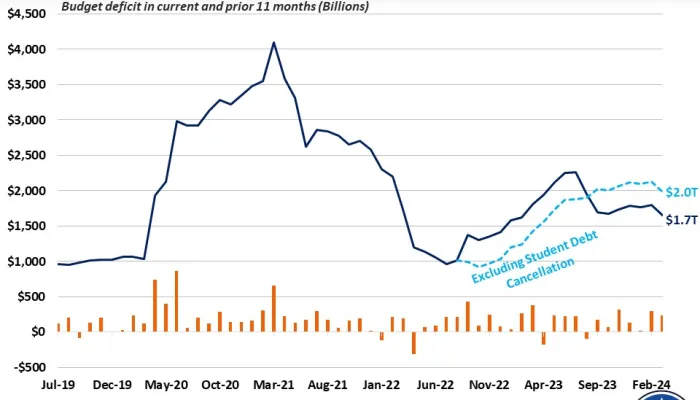OMB Releases Long-Term Projections for the FY2015 Budget Proposal
OMB just published additional information, explanations, tables, and projections related to this year's budget -- known as the Analytical Perspectives. As part of that information, OMB published long-term estimates for the federal budget under the President's policies.
As we discussed last week, OMB projects that the President's budget would help to reverse the growth in the debt-to-GDP ratio, allowing it to rise to a post-WW II record of nearly 75 percent of GDP in 2015 but then fall continuously to 69 percent in 2024 (our rough estimates suggest CBO might be somewhat more pessimistic). According to OMB's longer-term projections released Monday, debt would remain just below 70 percent of GDP through 2040, but then begin to decline as a share of GDP.
Under OMB's "base" scenario, revenue would rise from about 17 percent of GDP this year to nearly 20 percent by 2024 and nearly 23 percent by 2080. Meanwhile, non-interest spending would fall slightly from nearly 20 percent this year to 18.5 percent by 2024 and remain between 18 and 19 percent of GDP for most of the years that follow. As a result, OMB projects the budget would reach balance by 2053 and debt would be completely paid off by 2072.
OMB also produces a number of alternative scenarios in which different assumptions are made with regards to economic growth, revenue growth, health care spending, etc. Each of the 10 scenarios can be viewed here. Under OMB's "optimistic" scenario, which assumes faster economic growth and lower health care costs, the budget would be balanced by 2034 and the debt paid off before 2050. Under its "pessimistic" scenario, the budget would never balance and the debt would reach 150 percent of GDP by about 2090.
Interestingly, OMB's numbers differ substantially from recent long-term projections from CBO. Whereas OMB projects the debt will be completely paid off by the early 2070s, CRFB's extrapolation of CBO's ten-year current law projections suggests they'll project debt levels of roughly 225 percent of GDP by that time. A portion of the difference comes from the policies in the President's budget, which reduce deficits by almost 1.3 percentage points of GDP in 2024 alone, compared to a CBO current law baseline.
However, the differences also appear to be driven by assumptions. CBO assumes discretionary spending will grow with GDP, whereas OMB assumes it will grow with inflation plus population -- falling from 6.8 percent of GDP this year to just 1.7 percent 75 years from now. On health care, OMB projects much slower excess cost growth. As a result, Medicare and Medicaid costs would increase from 4.6 percent of GDP today to 7.6 percent over the next 75 years under OMB's assumptions, compared to roughly 9.4 percent under our extrapolations of CBO's data.
The two agencies also project different long-term economic growth rates -- CBO projects annual growth of real GDP to average between 2.0 and 2.2 percent over the long term, while OMB projects about 2.3 percent average annual growth. By the 75th year, this results in GDP levels that are noticeably higher under OMB's projections than CBO's.
* * * *
Long-term projections are extremely uncertain and very sensitive to the assumptions used. But instead of throwing them out the door, as some have suggested, it's useful to see the range of OMB estimates. It is encouraging that OMB projects a falling debt-to-GDP ratio over the long-term, but these projections should be viewed with at least some caution. Last week, we simulated how CBO might project the President's budget when it releases its re-estimates in the coming weeks and found that CBO could potentially estimate a rising debt path later this decade under the President's proposals -- with debt exceeding 73 percent of GDP in 2024 instead of the 69 percent that OMB projects. The trajectory of this difference could hold for long-term estimates as well.
In the face of so much uncertainty, it would be prudent to prepare for more pessimistic scenarios and then readjust expectations if events turned out to be more favorable. To that end, it is encouraging that the President's budget calls for further deficit reduction beyond what has been enacted, but additional reforms will likely be needed to put the debt on a clear downward path over the next two decades instead of a stabilized path.


